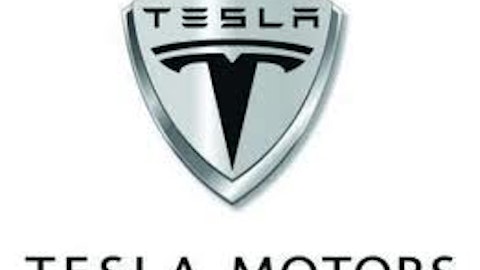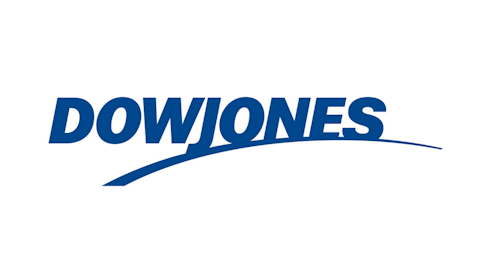In this full interview with Doug Levy, he discusses his new book, Can’t Buy Me Like. In the book, Levy tackles the changing marketing space, believing that companies must either adapt or continue to put blind faith on increasingly ineffective advertising. Levy also explains a new era that we’ve entered, dubbed the ‘relationship era’, and describes how this will change marketing for all companies, big and small.

One of the companies grabbing hold of the new way the world does marketing is Google Inc (NASDAQ:GOOG). As one of the most dominant Internet companies ever, Google Inc (NASDAQ:GOOG) has made a habit of driving strong returns for its shareholders. However, like many other web companies, it’s also struggling to adapt to an increasingly mobile world. Despite gaining an enviable lead with its Android operating system, the market isn’t sold. That’s why it’s more important than ever to understand each piece of Google’s sprawling empire. In The Motley Fool’s new premium research report on Google Inc (NASDAQ:GOOG), we break down the risks and potential rewards for Google investors. Simply click here now to unlock your copy of this invaluable resource.
Brendan Byrnes: Hi, I’m Brendan Byrnes and I’m joined today by Doug Levy. Doug is the author of Can’t Buy Me Like, and also the founder and CEO of MEplusYOU. Thank you for your time.
Doug Levy: I’m delighted to be with you.
Brendan: My first question is about the book. You talk about this Relationship Era that we’re now entering. Can you describe that, and what that means for marketers?
Doug: You bet. First, a little context. We have entered a new era. We got here by way of a couple of preceding eras. The first era of marketing I call the Product Era, where marketers just talked about the product and the features of the product.
That gave way to a new era around the 1960s, when marketers realized that they could not just talk about their product but really get to know the people who were intended to buy their product, and win over hearts and minds, so marketing shifted from the Product Era to the Consumer Era.
We’ve now moved out of the Consumer Era. We’ve moved to a new era. This new era is called the Relationship Era, and what we’re seeing is that marketers who continue to do business in a way that was prescribed by the Consumer Era are struggling, relative to those who have fully entered this new era.
Brendan: How do you enter this new era? What are some principles that you can use to be successful in the Relationship Era?
Doug: Chief among them is that companies that care about something bigger than selling their product sell more of their product. It’s counterintuitive, but that’s exactly it. What I’m talking about is not moving away from caring about selling your product, or not caring about profit.
The companies that have been the most successful in the Relationship Era care deeply about selling things and about profit. In fact, they’ve been extraordinarily profitable. They care about something in addition to that, something bigger than that, also.
Brendan: What’s the biggest mistake that marketers are making nowadays? Is it not adapting to this new way of thinking, or are there other mistakes that they’re making as well?
Doug: Yeah, they are. I think some marketers are mistaking media channels for the relevance of their approach to marketing.
In other words, they may mistake what I’m calling the Consumer Era with old media — TV, radio, print — and the Relationship Era with new media — digital, social, mobile — but that’s not it at all. What we’re talking about isn’t a channel or a tool or a technology. It’s a mind-set or an intent.
Brendan: What about trying to measure this? Obviously when it comes to advertising, marketing successes, back in the old days you threw ads on TV… Now we have a way of directly measuring that with the Internet and how many clicks something’s getting. It comes directly to these advertising executives. How much does that affect the way that things are changing, if at all?
Doug: It does, in part because some things are more difficult to measure, so what gets measured most often in corporations are the financial metrics.
What we’re talking about here is not moving away from those financial metrics, but also fully embracing a non-financial component of business, namely trust. The degree to which there’s trust between a company and an individual has a significant impact. For a company, it can look like deeply understanding the customers you’re in relationship with, and how much they love you.
What we’ve seen now more than ever is that companies that have not just people who buy their product that are OK with them, but they have at least a handful of people who are crazy about them. Those people now have a megaphone to scream the message about the company in question.
Brendan: And their friends trust them more, than coming from the company, right?
Doug: Precisely, yeah. Nielsen reports that trust in personal recommendations is 92% and growing, whereas trust in what companies say, advertising, is 26-47% and shrinking. People don’t believe what companies say. They believe what their friends say.
Brendan: Let’s talk about some companies that are doing a good job adapting to this. What are some success stories that you’ve seen with companies changing the way they market, as far as the Relationship Era, as you call it?
Doug: One success is in the quick-service restaurant industry, which is a little ironic. This is an industry that’s known for cost-cutting and efficiency, not necessarily humanity, but one company in particular, Panera Bread Co (NASDAQ:PNRA), has done a phenomenal job.
They have 1600 bakery/cafés. They’re known for a healthy menu, at least by chain restaurant standards, and friendly service. They bake fresh bread in the morning and they donate what isn’t sold that day to charities in the communities in which they operate.
I’ve gotten to know the CEO, Ron Shaich, and when I talk to him he tells me stories about what happens in the stores, about a woman in Florida who came in after chemotherapy and the woman across the counter noticed that something was up and reached across the counter to give the customer a hug and a free lunch.
What’s happened there has been amazing. This is a company that just launched a new ad campaign very much in line with this way of thinking. They launched it on TV and on social media, again demonstrating that it’s not about channel.
You’d think that this care for customers and this care for communities would cost them financially, they’d be making less money, but no. In reality, the average Panera café has grown from $1.1 million of revenue to $2.4 million of revenue. The Dow Jones Average over the last five years is up 13 points; Panera is up more than 300.
Brendan: It goes into the old thing, it’s easier to keep a customer than to attract a new one.
One of the things I wanted to ask you about was one of the examples you have in the book; Citigroup Inc. (NYSE:C), which is interesting because you can go all sorts of different companies. A lot of people think Citibank has this bad reputation among some people, but they’re actually one that you cite as doing a good job in this respect?
Doug: Yeah. One of the things that they’ve done, I think, is …
First, some companies do embody a Relationship Era approach to doing business kind of intuitively, automatically. Some get there because they’ve experienced pain. Citibank’s clearly in that latter category. They’ve experienced a tremendous amount of pain, and I think it was a wake-up call to at least some people at Citi.
One of the things they started doing is really listening to their customers, I believe. They did that by using the Net Promoter Score — you were asking about metrics before; that can be a great metric to assess the degree of trust in the relationship between a company and an individual — and putting into practice some of the things that they heard customers declaring an interest in.
Brendan: Another thing you cite in the book is companies that are doing it the wrong way. You say McDonald’s Corporation (NYSE:MCD), Progressive Insurance, United Continental Holdings Inc (NYSE:UAL), at least in some instances. Could you talk about that a little bit?
Doug: Yeah, sure. I’ll start with the last one you mentioned, United Airlines, because it’s such a good example of how marketing has shifted.
It used to be that it was the marketer’s job to shape perception of the brand, to define what the brand is. To that end, United has spent billions of advertising dollars trying to shape a message. They’ve done that with ads that show beautiful airplanes in the sky, and this amazing flying experience. They use George Gershwin’s “Rhapsody in Blue,” this uplifting tune, to talk about the experience of flying on United.
There’s only one problem; that’s not the experience of flying on United. The actual experience is not the beauty of the ads, it’s pretty darn ugly; reduced services, pay-as-you-go food, lost luggage. So, though they’ve spent these billions of ad dollars, the actual experience that people have is what’s actually resonating.
Brendan: What was the example? The guy with the guitar?
Doug: Yeah, it’s such a great example. Dave Carroll was on a plane. He was looking out the window before the plane took off. This band leader was going to a gig and looked out the window, and he saw a guitar being thrown across the runway, and when he arrived his guitar was broken.

